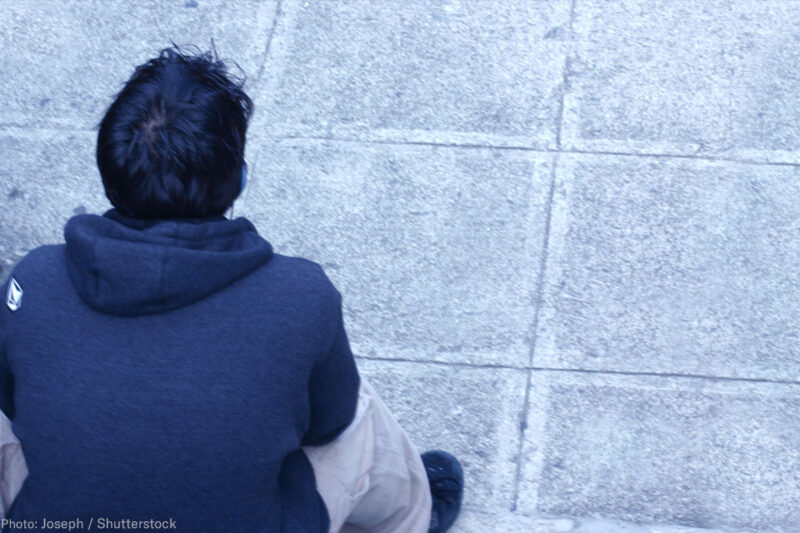Diversion Keeps Kids Out of the Criminal Justice System, but Too Many Police in New Jersey Fail to Use It


We’ve all seen something like this on TV or in an old movie: A parent arrives at a police station to pick up their child, who, instead of being arrested and charged with a crime, has just been given a stern warning and an opportunity to make amends.
The technical term for this practice is diversion, and it’s a critical tool in ending mass incarceration. If we’re going to reduce the number of people we put behind bars, we can’t only focus on people who are incarcerated or who have already had extensive contact with the criminal justice system. We need to prevent that involvement in the first place. That starts in childhood with diversion.
A forthcoming report from the ACLU of New Jersey, “Missed Opportunities: Youth Diversionary Programs in New Jersey,” delves into strategies to stop the criminalization of our youth, specifically programs that allow young people to avoid arrest for low-level offenses.
Within the juvenile justice system, there are stark racial disparities in who gets detained — disparities that are inevitably reproduced by the adult criminal justice system. Given the reality that past incarceration is the single greatest factor in predicting a person’s future criminal activity, diversionary programs are crucial. But these opportunities aren’t an option for the majority of young people simply because law enforcement agencies don’t take advantage of them.
In New Jersey, we have two diversionary programs authorized by the state attorney general: curbside warnings and stationhouse adjustments. A curbside warning is an informal “talking-to” by police officers. For example, when an officer encounters a young person doing something dangerous, that officer may talk through the issue with the young person at the scene. The young person is then released, without being detained or taken to the station.
Stationhouse adjustments are more formal. In exchange for the department not filing a juvenile delinquency complaint, a young person accused of a low-level offense or ordinance violation agrees through a contract to satisfy a set of conditions, such as writing a letter of apology or performing community service.
While curbside warnings are largely undocumented, and thus hard to track, stationhouse adjustments are not. Based on public records responses from 17 of New Jersey’s 21 counties, the ACLU of New Jersey discovered troubling racial disproportionality in the use of stationhouse adjustments. While Black young people made up 28.3 percent of juvenile drug arrests in 2015, they made up only 11.3 percent of those who received stationhouse adjustments for drug, alcohol, and tobacco offenses. White youth, on the other hand, comprised 69.6 percent of juvenile drug arrests but received over three-quarters of stationhouse adjustments for drug, alcohol, and tobacco offenses in 2015.
Statewide, there were more than 1,400 juvenile arrests for curfew and loitering violations in 2015 alone, and more than 60 percent of these young people were Black. Yet, in the 17 counties studied by the ACLU of New Jersey, there were only 13 stationhouse adjustments for these exceedingly low-level violations – 10 of the 13 youths who benefited were white.
There’s good reason to make wider use of this tool. Of the 5,239 stationhouse adjustments we tracked from 2014 to 2016, more than two-thirds resulted in kids being successfully diverted from the juvenile justice system. But, despite these largely successful outcomes, more than 40 percent of municipalities among the 17 counties didn’t utilize them. During this same period, there were estimated to be more than 60,000 juvenile arrests.
Every kid arrested for status offenses — like curfew violations or running away or for low-level offenses such as disorderly conduct, loitering, or trespassing — represents a missed opportunity for diversion. With better-resourced programs, we can meaningfully address racial disparities in juvenile justice, take steps toward juvenile decarceration, and prevent young people from having to start out their lives with the mark of a criminal record.
Diversionary programs work best with strong oversight as well as clear standards. This means that state attorneys general need to incentivize law enforcement agencies to make sure that police officers fully understand and exercise their authority to use diversion. This also requires the attorney general to develop training guidelines to ensure bias-free implementation and enable faster, more transparent reporting by agencies.
The path to ending racial disparities and reducing the prison population must include serious efforts to keep people from becoming trapped in the criminal justice system in the first place. That path begins with kids.

